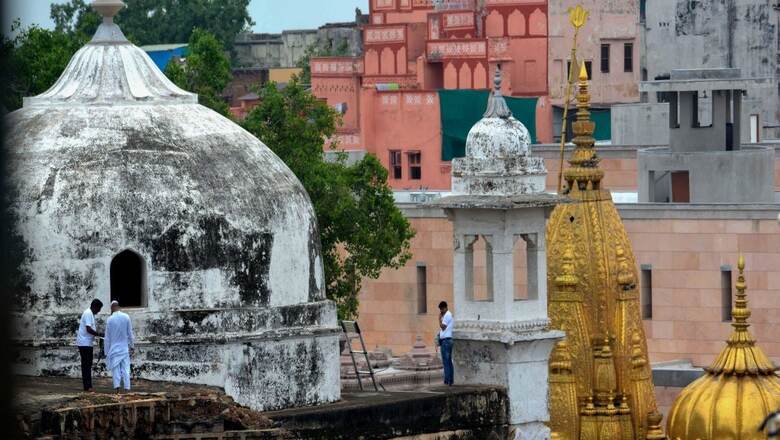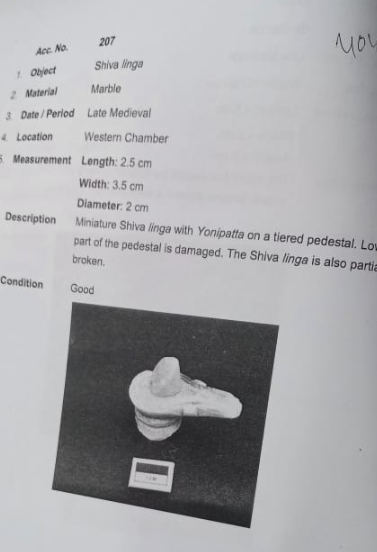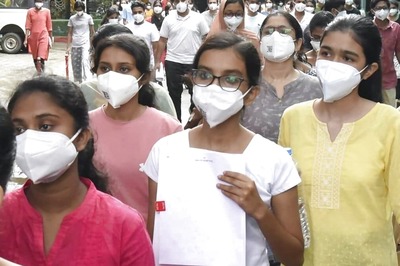
views
The findings of a scientific survey by the Archaeological Survey of India (ASI) on the Gyanvapi Mosque in Varanasi premises confirmed the existence of a temple before the construction of the mosque.
Following ASI’s survey report, the Vishva Hindu Parishad (VHP) urged the Anjuman Intezamia Masjid Committee to consider the new report and “make an offer to respectfully” move the Gyanvapi mosque to “another appropriate place” and “handover” the site to the Hindu community.
VHP’s International Working President, Alok Kumar, said that the organisation makes two demands following the confirmation of a temple’s existence. First is for the offering of ‘Sewa Puja‘ to the Shivling found in Wazukhana and second to handover the original site to the Hindu community.
15 ‘SHIVLING’, 5 ‘HANUMAN’: ASI FINDS 55 STONE SCULPTURES
During the scientific survey by ASI inside the Gyanvapi mosque premises, as many as 55 stone sculptures were found. This included, 15 “Shivling“, three Lord “Vishnu” sculptures, three of Lord “Ganesh“, two “Nandi”, two “Krishna” and five “Hanuman” sculptures.
The ASI report, as quoted by Indian Express, said that the temple “appears to have been destroyed in the 17th century, during the reign of Aurangzeb and part of it… modified and reused in the existing structure”. It was also said that one stone sculpture of “Makara“, one “Dwarpala“, one “Apasmara Purusha“, one “Votive Shrine”, 14 “fragments” and seven “miscellaneous stone sculptures were found by ASI.
The survey report notes that 23 terracotta figures, of which two were of gods and goddesses, 18 were human structures and three were of animals.
The description of the Hanuman sculpture said that it was made of marble. The report read, “The extant part depicts the bottom half of a sculpture of Hanuman. The left leg bent at the knee is placed on a rock. The right leg is firmly planted on the ground.” Meanwhile for the Ganesha sculpture, the report read that the “crowned head of Ganesha” is depicted, “the trunk is turned to the right and the eyes are visible”. Lord Ganesha’s structure was listed as “late medieval”.

The report added that two glass objects — a pendant and a broken Shivling — were also found during the survey.
WAZUKHANA SURVEY DEMANDED BY HINDU SIDE
The Hindu side counsel is preparing to approach the Supreme Court with a request for another survey by the ASI, this time only for ‘wazukhana’ and the portion beneath the ‘central dome’.
Advocate Vishnu Shankar Jain on Saturday said, “As ASI’s survey has confirmed that the existing structure at Gyanvapi is standing atop a Hindu temple, we will now move a plea before SC on Monday to seek a comprehensive survey of the wazukhana,” Times of India quoted him.
Amid the claims of a “Shivling” being found inside the wazukhana, its premises were sealed on May 16, 2022. Following this, even after the Varanasi court’s order — allowing an ASI survey of the mosque — on July 21 last year, the wazukhana was kept excluded. The apex court too upheld the exclusion of the pond.
VHP ASKS FOR ‘HANDOVER’ OF ORIGINAL SITE
Following the ASI survey report of the Gyanvapi mosque premises, the Vishva Hindu Parishad (VHP) said that there is no doubt left over the existence of a temple.
VHP made two demands in this regard, said the body’s International Working President Alok Kumar. These are:
- Offering of ‘Sewa Puja’ to the Shivling found inside the wazukhana should be allowed by the Court now.
- Urging Intezamia Committee to consider the new report and “respectfully” shift the mosque to another appropriate place and “handover” the site to the Hindu community.
Kumar said that since the evidence collected by the ASI proves that the religious character of the place existed on August 15, 1947, then “as per Section 4 of the Places of Worship Act, 1991, the structure should be declared as a Hindu temple”.
The ASI report also proves that parts of the pre-existing temple including pillars and pilasters were reused with modifications to extend the span of the mosque and in the construction of the ‘sahan’. He said that finding the names of ‘Janardana’, ‘Rudra’, ‘Umeswara’ in the inscriptions on the structure are the “tell-tale evidence” of it being a temple.
JUST A REPORT, NOT A JUDGMENT, SAYS MOSQUE COMMITTEE
Following the report of the ASI survey of the Gyanvapi Mosque, the masjid committee said that it just a report and not a judgment.
The Anjuman Intezamia Masjid Committee said that they are studying the report and would make comments once they are done.
Mohammed Yasin, the committee’s secretary said, “This is just a report and not a ‘faisala’ (judgment). There are several kinds of reports. It is not the final word on the issue.”
‘WILL NOT EAT FOODGRAIN UNTIL GYANVAPI IS LIBERATED,’ SAYS KASHI SEER
A seer from Kashi, Jitendranand Saraswati, who is the general secretary of Akhil Bharatiya Sant Samiti said that the will not “eat foodgrain” until “Gyanvapi in Kashi is liberated”.
He said that this is his “personal pledge”.
“It is not that I am the first person to take this pledge. Rishis and seers have been performing this penance for thousands of years. In such a situation, my personal vow is that I will not eat food until Kashi Gyanvapi becomes free and it takes the shape of a grand temple,” Hindustan Times quoted Saraswati as saying.
He said “I am not a hunger striker. I am not an agitator. I am a Dandi Sanyasi,” citing that he will be consuming milk and fruits.
‘…PART OF A PRE-EXISTING HINDU TEMPLE’ | WHAT THE ASI REPORT SAID
The ASI report read, “Based on the scientific studies and observations – central chamber and main entrance of the pre-existing structure is existing structure, western chamber and western wall, reuse of pillars and pilasters of pre-existing structure in the existing structure, inscriptions on the existing structure, Arabic and Persian inscription on the loose stone, sculptural remains in cellars, etc – it can be said that there existed a large Hindu temple, prior to the construction of the existing structure.”
It said that remains of bird figure carved on the doorsill appears to be that of a cock, adding that the western wall of the existing structure is “the remaining part of a pre-existing Hindu temple”.
FOUGHT DARKNESS TO SHED LIGHT: ASI TEAM’S EFFORTS TO CONDUCT SURVEY
The ASI team, which conducted the scientific survey on the premises of the Gyanvapi mosque, endured everything from darkness to humidity, just to ensure that the work is done in the right manner.
The worked through the darkness to shed light on the reality of the premises.
The entire survey process was slowed down after the High Court ordered for a ‘surface only’ study, the ToI report said.
Battling through all the tough weather conditions — in scorching heat, in humid monsoon — the ASI team worked on the premises. The survey report said that the south and north cellars of the complex had no electricity or light available in them.
The team reportedly faced difficulty to even step on the surface of the south cellar area because of all the debris material lying there. The humidity inside these cellars, where the team worked with just torches, was higher than outside. The north cellar had more humidity than the south one, making ASI’s task even more tough.
Monsoon did not bring any respite either, rather it brought seepage and slush. The survey body used waterproof sheets to protect the structure from being exposed to the rain water.
Amid all this, was the chaos reigned in by monkeys. They frequented the premises freely and also posed obstacles in the ASI team’s working. The monkeys even tore the waterproof sheets.
(With PTI inputs)

















Comments
0 comment